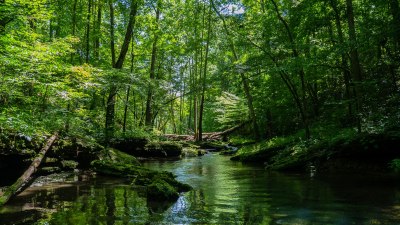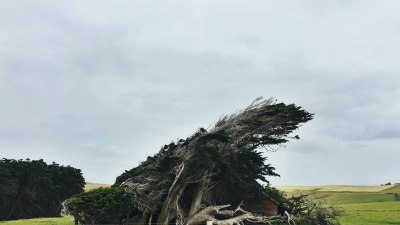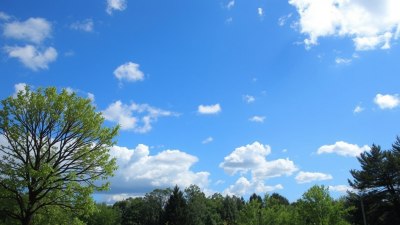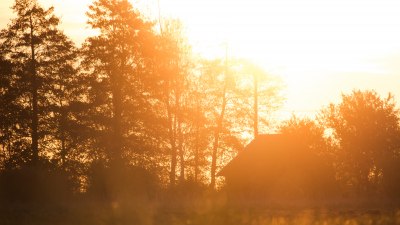How Forests Influence Weather and Create Their Own Rain
Explore the vital role of forests in shaping weather patterns and producing rainfall through unique ecological processes.

Forests play a crucial role in our environment, acting as vital ecosystems that support a multitude of life forms. Their influence on weather patterns and the ability to produce their own rainfall is a fascinating area of study that highlights the interconnectedness of Earth's systems. This article delves into how forests contribute to weather changes, generate rainfall, and the implications for both local and global climates.
The Role of Forests in the Water Cycle
Forests are key components of the water cycle, which is the continual process of water movement from the earth’s surface to the atmosphere and back. Trees absorb water from the soil through their roots, which then evaporates from their leaves in a process known as transpiration. This transpired water vapor joins the atmospheric moisture that is critical for cloud formation and precipitation. Studies reveal that forests can significantly influence local humidity levels, thus playing a pivotal role in generating rainfall.
Transpiration: The Process of Evaporation
Transpiration occurs when plants release water vapor from their stomata, small openings on the underside of leaves. This process not only cools the plant but also contributes to the humidification of the surrounding air. The amount of moisture released varies with the type of vegetation, climate, and the overall health of the forest. For example, tropical rainforests, which are among the most biodiverse ecosystems, release vast amounts of moisture through transpiration, resulting in a higher likelihood of rainfall and perpetuating the cycle of water transfer.
Canopy Cover and Microclimates
The upper layer of a forest, known as the canopy, plays a significant role in regulating temperature and humidity. The dense foliage creates a microclimate under it, which can be cooler and more humid than the surrounding areas. This localized climate can enhance the rate of transpiration, further increasing moisture availability for cloud formation. In certain ecosystems, such as mangroves and peat forests, the unique structure of the canopy can lead to the creation of localized weather patterns, contributing to increased rainfall.
The Feedback Loop Between Forests and Rainfall
Forests not only influence rainfall but also benefit from it in a feedback loop. Rainfall nourishes the flora, which in turn produces more moisture through transpiration, thereby leading to more rainfall. This cycle is crucial in maintaining the health of forest ecosystems and allows them to thrive even under changing climate conditions. Additionally, the fallen leaves, wood, and other organic materials decompose, enriching the soil and helping to retain moisture, which further contributes to the overall resilience of these ecosystems.
Forests and Storm Formation
Research indicates that large forested areas can significantly influence storm systems as they interact with airflow and temperature gradients. Forest canopies can alter wind patterns, promoting the uplift of air needed for storm formation. As water vapor is drawn up from the forest floor, it cools and condenses, potentially leading to precipitation events that might not occur otherwise. This effect can be particularly pronounced in regions where forests are extensive, such as the Amazon Basin.
Impact of Deforestation on Weather Patterns
Deforestation significantly disrupts these natural processes. The removal of trees reduces transpiration rates, leading to decreased humidity and increased temperatures in the surrounding area. Studies have shown that deforested regions experience reduced rainfall, which can lead to a variety of ecological and social repercussions, including droughts, decreased agricultural productivity, and loss of biodiversity. The impact of deforestation is far-reaching, affecting not only local ecosystems but also regional climate patterns.
Reforestation as a Climate Mitigation Strategy
Given the clear connection between forests and climate, reforestation efforts are increasingly seen as a viable strategy for climate change mitigation. By restoring forested areas, we can enhance transpiration rates, rebuild microclimates, and ultimately, influence local and regional weather patterns positively. Additionally, forests act as carbon sinks, absorbing CO2 from the atmosphere, which helps to combat global warming.
The Future of Forests and Weather Interactions
As climate change continues to alter weather patterns around the globe, the role of forests will be paramount in determining local climates and weather events. Understanding how forests create their own rain and influence the weather will be essential for future conservation efforts. Effective management of forest resources, restoration, and protection will not only mitigate climate-related stresses but will also enhance the resilience of ecosystems, ensuring their continued contribution to the planet's climate system.
Conserving Forests for Future Generations
Forests offer incredible ecological benefits, influencing weather patterns, creating their own rainfall, and supporting biodiversity. Their delicate balance is a testament to nature's complexity, and safeguarding these ecosystems is crucial for maintaining overall planetary health. As we move forward, prioritizing forest conservation and responsible management will ensure that future generations can enjoy the myriad benefits that forests provide, securing our planet's climatic stability and ecological diversity.











